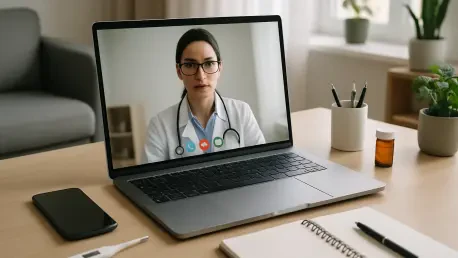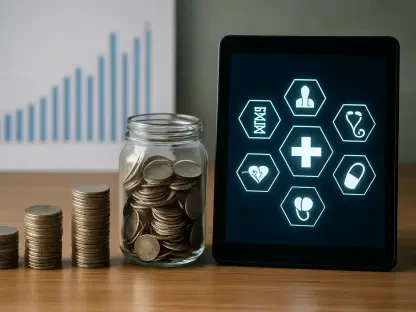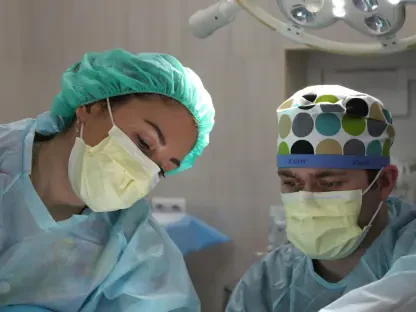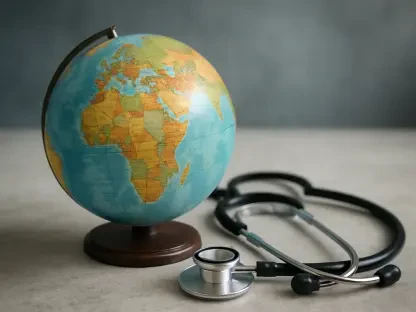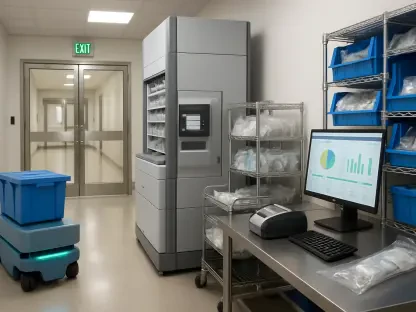In an era where access to healthcare can mean the difference between timely treatment and prolonged suffering, the University of Arkansas for Medical Sciences (UAMS) in Little Rock has taken a monumental step forward with a newly awarded $1.3 million grant from the Health Resources and Services Administration (HRSA). This funding, set to transform digital health access across Arkansas, Mississippi, and Tennessee through the South Central Telehealth Resource Center, is distributed at $325,000 annually through 2029, highlighting a national push to strengthen telehealth services, especially in regions where traditional healthcare remains out of reach for many. By prioritizing underserved communities, this initiative aims to bridge critical gaps in care delivery, leveraging technology to ensure that geography no longer dictates the quality of medical attention. As telehealth continues to reshape the healthcare landscape, this grant positions UAMS as a leader in driving innovation and equity in digital health services across the tri-state area.
Expanding Digital Health Infrastructure
The South Central Telehealth Resource Center, housed under the UAMS Institute for Digital Health & Innovation, stands at the forefront of this transformative effort. With the HRSA grant, the center is poised to enhance its mission of providing technical assistance, workforce training, and evidence-based resources to healthcare providers and organizations across the region. Accessible through platforms like LearnTelehealth.org and personalized support, the center offers an array of tools, including virtual visit billing guides, regional policy updates, and educational webinars. These resources are designed to empower providers with the knowledge needed to navigate the complexities of telehealth implementation. Beyond professional support, the center also focuses on patient engagement by developing materials for digital consultations and remote monitoring, ensuring that virtual care is not only accessible but also user-friendly for individuals seeking medical services from the comfort of their homes.
Equally significant is the center’s role within a broader network of telehealth advancement. As one of 12 centers in the National Consortium of Telehealth Resource Centers, it collaborates with HRSA and various partners to amplify its impact. Continuously funded since its establishment in 2010, the center maintains five satellite training facilities in Arkansas and Tennessee, further extending its reach. This infrastructure allows for tailored support that addresses the unique needs of different communities, fostering a more inclusive approach to healthcare delivery. By equipping providers with cutting-edge tools and fostering regional collaboration, the center ensures that telehealth is not just a temporary solution but a sustainable model for the future. The $1.3 million grant reinforces this commitment, providing the financial backbone to scale operations and refine services over the next several years, ultimately benefiting countless patients who might otherwise struggle to access care.
Addressing Healthcare Disparities
A core mission of the South Central Telehealth Resource Center is to tackle the stark healthcare disparities prevalent in rural and medically underserved areas. These communities often grapple with challenges such as limited transportation options, a shortage of specialty care providers, and elevated rates of chronic conditions that require consistent management. Through the HRSA grant, the center aims to promote the widespread adoption of digital health services, ensuring that geographic isolation does not equate to inadequate medical care. Enhanced training programs and improved digital literacy initiatives are central to this effort, as they equip both providers and patients with the skills needed to engage with telehealth platforms effectively. This focus on equity aligns with national healthcare policy trends that recognize telehealth as a vital mechanism for leveling the playing field in access to quality care across diverse populations.
Beyond immediate access, the center’s work addresses systemic barriers that have long hindered rural healthcare delivery. By fostering partnerships and providing resources tailored to the unique challenges of these areas, the initiative seeks to create a lasting impact on community health outcomes. The grant’s support enables the expansion of programs that directly combat issues like delayed diagnoses and untreated conditions, which are often exacerbated by distance from medical facilities. Additionally, patient-focused materials help demystify telehealth for those unfamiliar with digital tools, ensuring that technology serves as a bridge rather than a barrier. This comprehensive approach not only enhances care delivery in the short term but also builds a foundation for long-term resilience in underserved regions, demonstrating how targeted funding can drive meaningful change in the healthcare landscape.
Innovative Training and Future Initiatives
Among the standout efforts supported by this grant is the Telehealth Implementation Bootcamp, a program co-hosted by the center to build capacity among healthcare organizations nationwide. This intensive nine-month initiative includes in-depth training sessions, monthly webinars on critical topics like reimbursement and sustainability, and a culminating showcase event. Designed to equip participants with practical skills for expanding digital health services, the bootcamp represents a proactive approach to fostering innovation. Planning for the next cohort is already underway, signaling a sustained dedication to strengthening telehealth capabilities over time. As highlighted by the center’s director, Melony Stokes, DNP, RN, such programs have a tangible impact by providing healthcare professionals with the tools and knowledge needed to adapt to an increasingly digital care environment.
Looking ahead, the grant’s impact will likely extend beyond current programs to inspire new strategies for telehealth adoption. UAMS, as Arkansas’s only health sciences university and the state’s largest public employer with over 11,000 staff, including 1,200 physicians, is uniquely positioned to lead these advancements. Its extensive network, encompassing partnerships with entities like Arkansas Children’s and the VA Medical Center, amplifies the potential for widespread change. The funding will support continued collaboration and resource development, ensuring that both providers and patients are prepared to navigate the evolving demands of virtual healthcare. By investing in such initiatives, UAMS reinforces its role as a cornerstone of health innovation in the region, paving the way for a future where digital health solutions are seamlessly integrated into everyday medical practice.
Reflecting on a Milestone Achievement
Looking back, the allocation of the $1.3 million HRSA grant to UAMS’s South Central Telehealth Resource Center marked a pivotal moment in the journey toward equitable healthcare access. This funding empowered the center to enhance technical support, expand training opportunities, and develop critical resources for both providers and patients across Arkansas, Mississippi, and Tennessee. The success of initiatives like the Telehealth Implementation Bootcamp underscored the value of structured programs in building digital health capacity. Moving forward, stakeholders can build on this foundation by advocating for continued investment in telehealth infrastructure and exploring innovative ways to reach even more remote communities. Ensuring that technology remains a tool for inclusion rather than exclusion should guide future efforts, while ongoing collaboration with national and regional partners will be key to sustaining momentum in this vital area of healthcare advancement.
